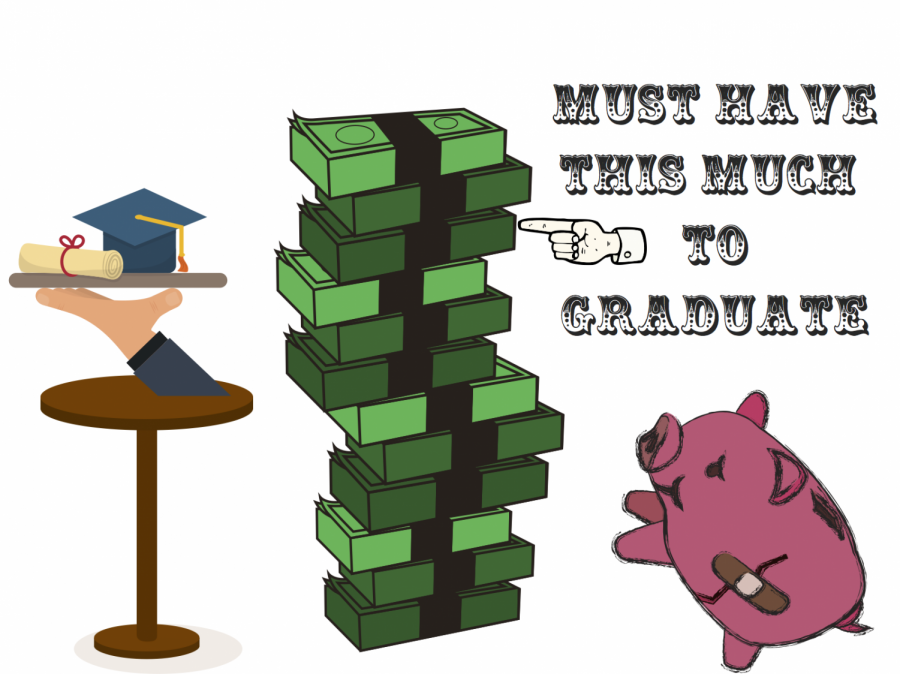EDITORIAL: Funding split between CSU and state hurts students
January 24, 2018
The continued disconnect between the state of California and its largest public university system continues to cause the most damage to the one group that it is supposed to benefit: the students.
The issue lies in a disagreement between the California State University’s Board of Trustees, which asked for $263 million for the coming academic year, and Governor Jerry Brown, who came back offering $92.1 million instead.
Brown’s offer would “barely” cover the money the CSU system is already on the hook for spending next year, and the funding gap — the largest so far in the history of the CSU — comes from the system’s request for more money in order to expand enrollment and graduation initiatives.
The CSU wants to expand enrollment because they are awash with qualified applicants, 31,400 of which were denied last academic year. Think of that: an entire Sacramento State’s worth of worthy students, willing to bring money into the system, rejected because the system is ill equipped to take them.
This further emphasizes the need for something (or anything) to be done to improve graduation rates. The faster students leave with degrees, the more new students can be accepted.
Systemwide, only 21 percent of students are graduating in the old custom of four years. At Sac State, the four-year rate is 12 percent, and the two-year rate for transfer students is 32 percent.
These numbers are all improvements from 2015-16 to 2016-17; the system and Sac State both credit this to varying graduation initiatives, including the one-year-old Finish in Four program at Sac State.
Prior to last year’s increase of $270, tuition rates had been frozen for almost half a decade. More troubling, the amount of state funding as a percentage of the CSU budget continues to drop, from 80 percent in the 1990s to about half now, following a practical doubling in tuition during the recession.
And as tuition rises, more and more students will work to subsidize the cost, making it more likely that they take less classes or fail the ones they do take, prolonging their stay at CSUs and taking a spot from incoming freshmen or juniors.
The easiest way to improve the economic fortunes of the citizens of California is to offer them quality education and not make them go into deep debt doing so; this is what the CSUs did for the 484,297 students enrolled last fall, and could do for even more students if they were able to accept all those qualified.
As Sac State President Robert Nelsen noted in his Spring Address, California is predicted to be short over a million qualified workers with bachelor’s degrees by 2030; not investing in students now seems to be in direct opposition to attempting to solve that problem.
The legislature and governor’s office need to step in and put money on the line when it comes to higher education. With that, the CSU needs to make sure the money given is money used to benefit the students, directly more often than indirectly.
An internal audit last year showed that the CSU employs too many administrators and has been giving them raises at levels exceeding those of faculty and non-faculty support staff.
The question has also been raised — including last semester by The State Hornet — why public universities spend gobs of money on athletics programs that do not make a profit, or even break even.
The CSU needs to start thinking of out-of-the-box ways to spend responsibly, with the timely success of students at the forefront of its mind at all times. The state of California needs to help, and treat the future workers of the most populous state in the country like a true priority.






























































































































Jen • Jan 26, 2018 at 10:18 am
How about providing more classes for students? Wouldn’t that help students graduate faster? Every semester, I see students getting turned away from classes, crashing classes, waiting on a list for a class that probably wont even take any more students… Increasing tuition is the last thing the school should do. They should provide more classes, especially those with only one section available. Continuing to turn away students who are already enrolled is only going to hurt the students and the school.